By: Taylor Shigezawa
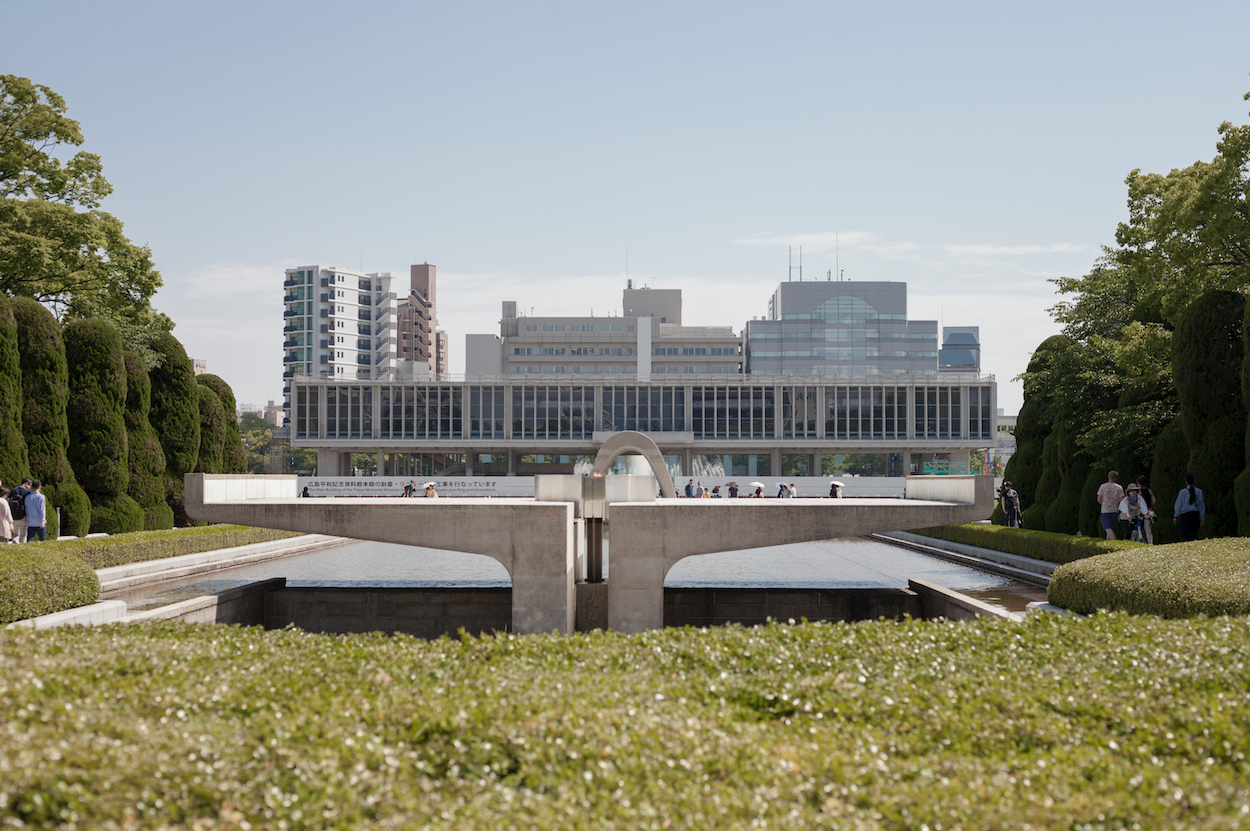
The exterior of the Hiroshima Peace Memorial Museum.
After an eventful morning and early afternoon at Miyajima, we arrived at the Hiroshima Peace Memorial Park.

A landscape view of the Atomic Bomb Dome and Ōta River.
Our first venture led us to the Atomic Bomb Dome, or the preserved remains of the Hiroshima Prefectural Industrial Exhibition Hall. The original building was in close proximity to the hypocenter of the explosion on August 6, 1945, and the people in the building, along with parts of the structure, were subjected to the blast of the atomic bomb. Now recognized as a UNESCO World Heritage Site, the Atomic Bomb Dome has become a symbol of the tragedy of the atomic bombs. After seeing the broken remains of the original hall, it was really hard for me to believe the structure had once held so many people whose lives were lost in the bombing.
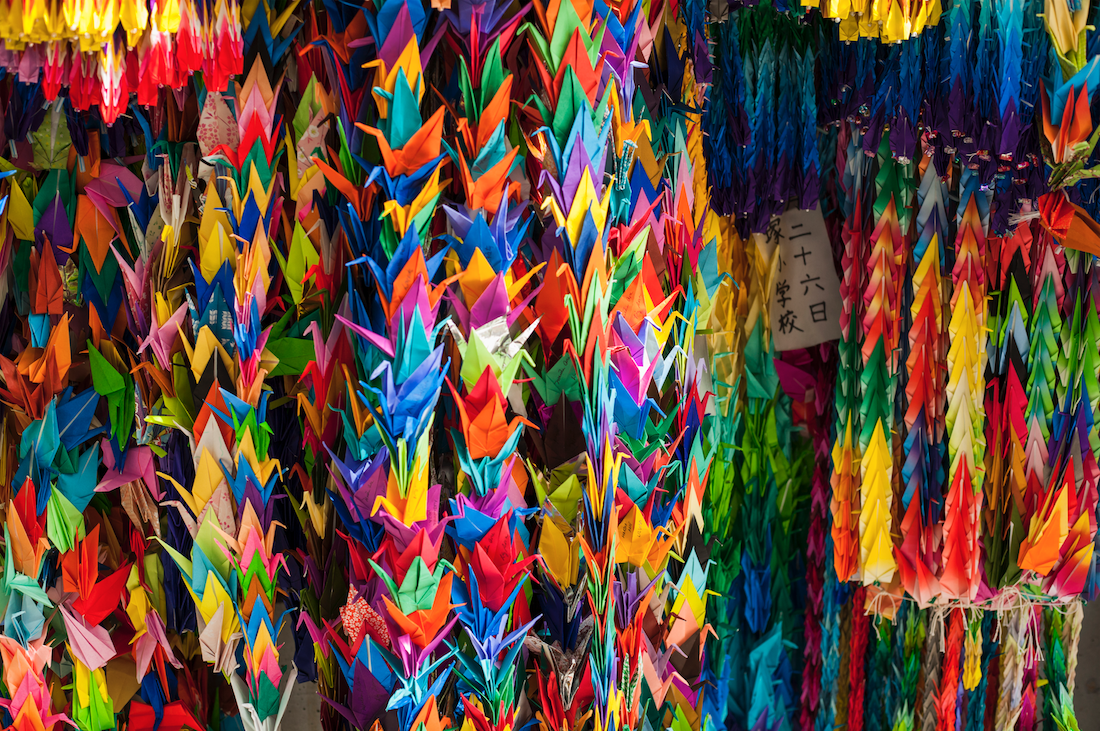
Cranes displayed in Children’s Peace Monument at the Peace Memorial Park.
Standing a few minutes away from the Atomic Bomb Dome, the Children’s Peace Monument was created in remembrance of Sadako Sasaki and other children lost because of the atomic bombing of Hiroshima. Sadako Sasaki, who passed away at the age of 12, was a young girl who developed leukemia after exposure to the atomic bomb radiation. During her lifetime, Sadako folded cranes in hopes that her wish for healing would be granted after folding 1000 cranes. Today, folded cranes serve as a symbol of peace for many individuals, and bunches of cranes (usually strung up in groups of a thousand) are displayed in glass cases at the monument. Fours year ago, my high school had also brought cranes to display in the cases, but they receive so many cranes every year that I was unable to find my school’s work.
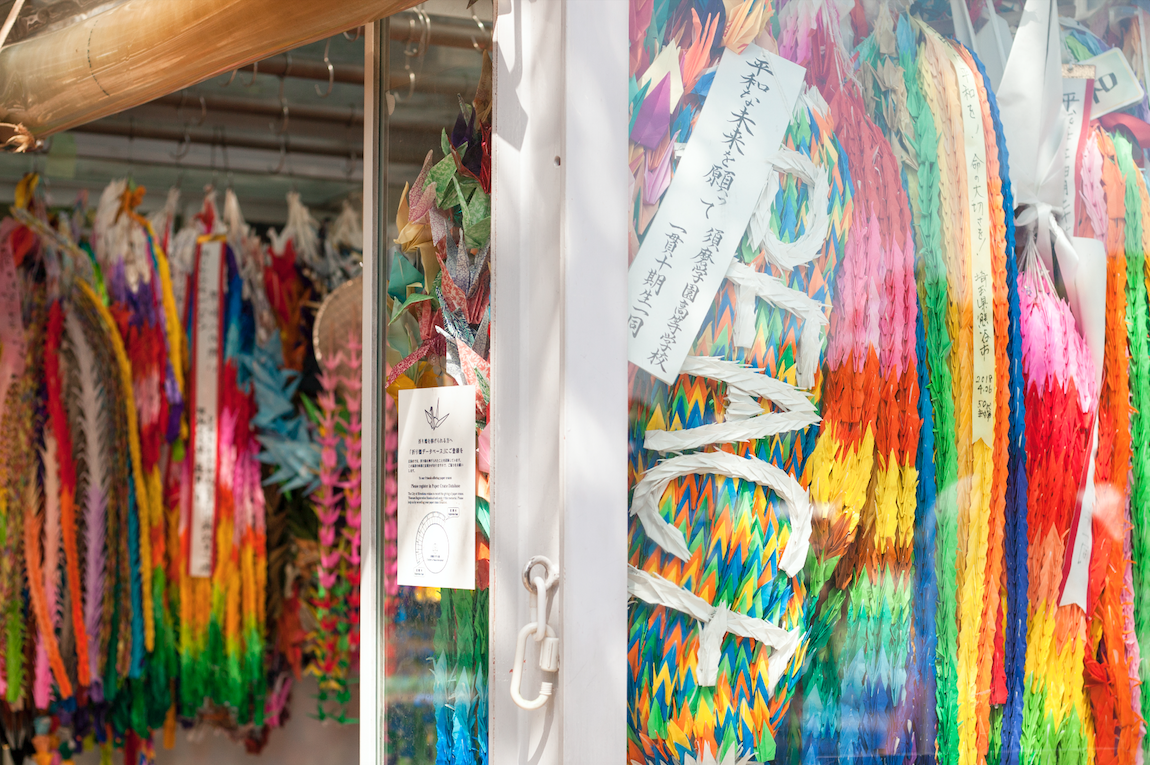
Cranes donated to be displayed later as part of the monument.
After exploring the Peace Memorial Park, we arrived at the Hiroshima Peace Memorial Museum. Because the museum will be under construction until 2019, we were only able to see a more condensed version of the museum. Nonetheless, I was extremely thankful for the opportunity to even visit this place again after four years.
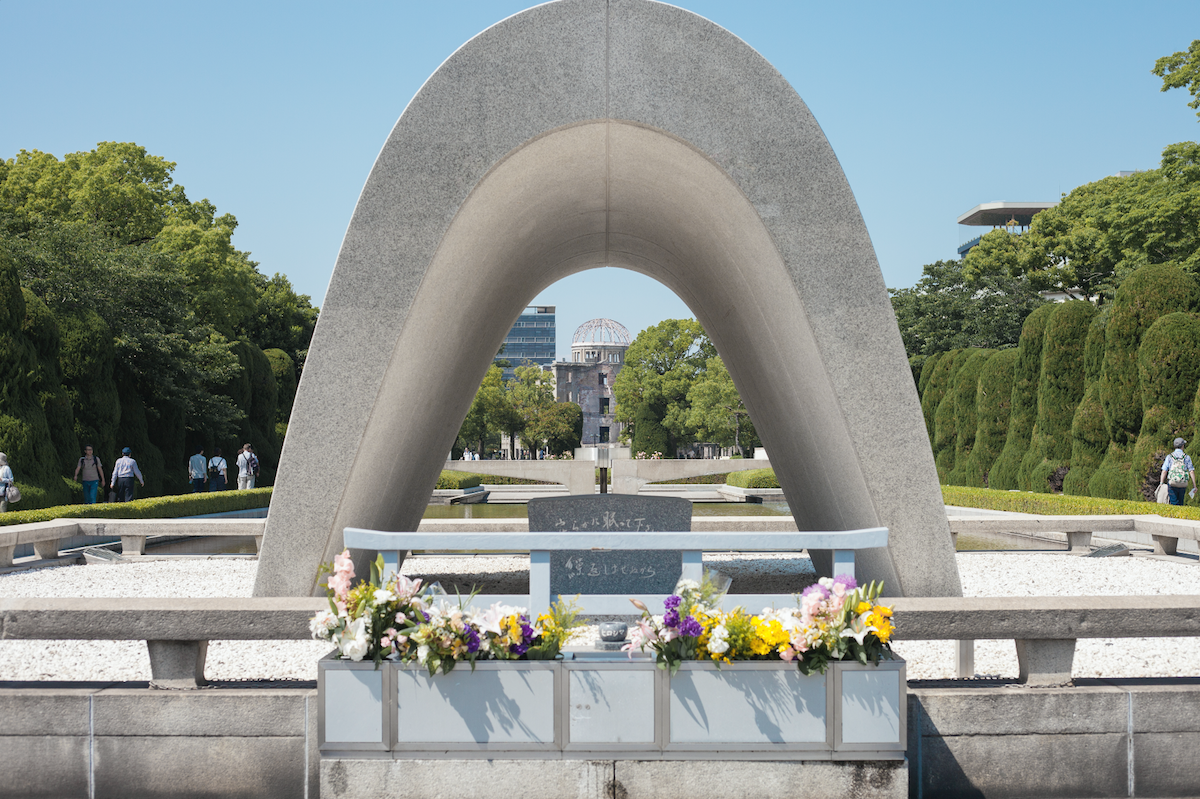
The “Memorial Monument for Hiroshima, City of Peace,” also known as the Cenotaph for A-Bomb Victims, contains a vault with the names of the atomic bomb victims.
One of the things that always strikes me most about the museum is how well the museum captures the tragedy and the history of the bombing of Hiroshima. Growing up in the American school system in a time decades after the incident, I had never felt directly connected to the atomic bomb calamity. I was able to recognize the disaster that affected the country, city, and lives of the people living throughout the nation, but reading about an event in textbook never quite captures an experience like a historical site or museum. Throughout the museum, belongings of the victims lost to the bombing were displayed along with pictures of victims burned by the flash and written accounts of the tragedy. I could better understand the weight of the devastation families felt throughout the aftermath of the 1945 bombings and connect the large number of victims to personal stories and individuals. Through viewing the personal accounts and the items of the victims, I was able to feel more connected to the incident and really understand the impact the bombing of Hiroshima had on Japan and the world.
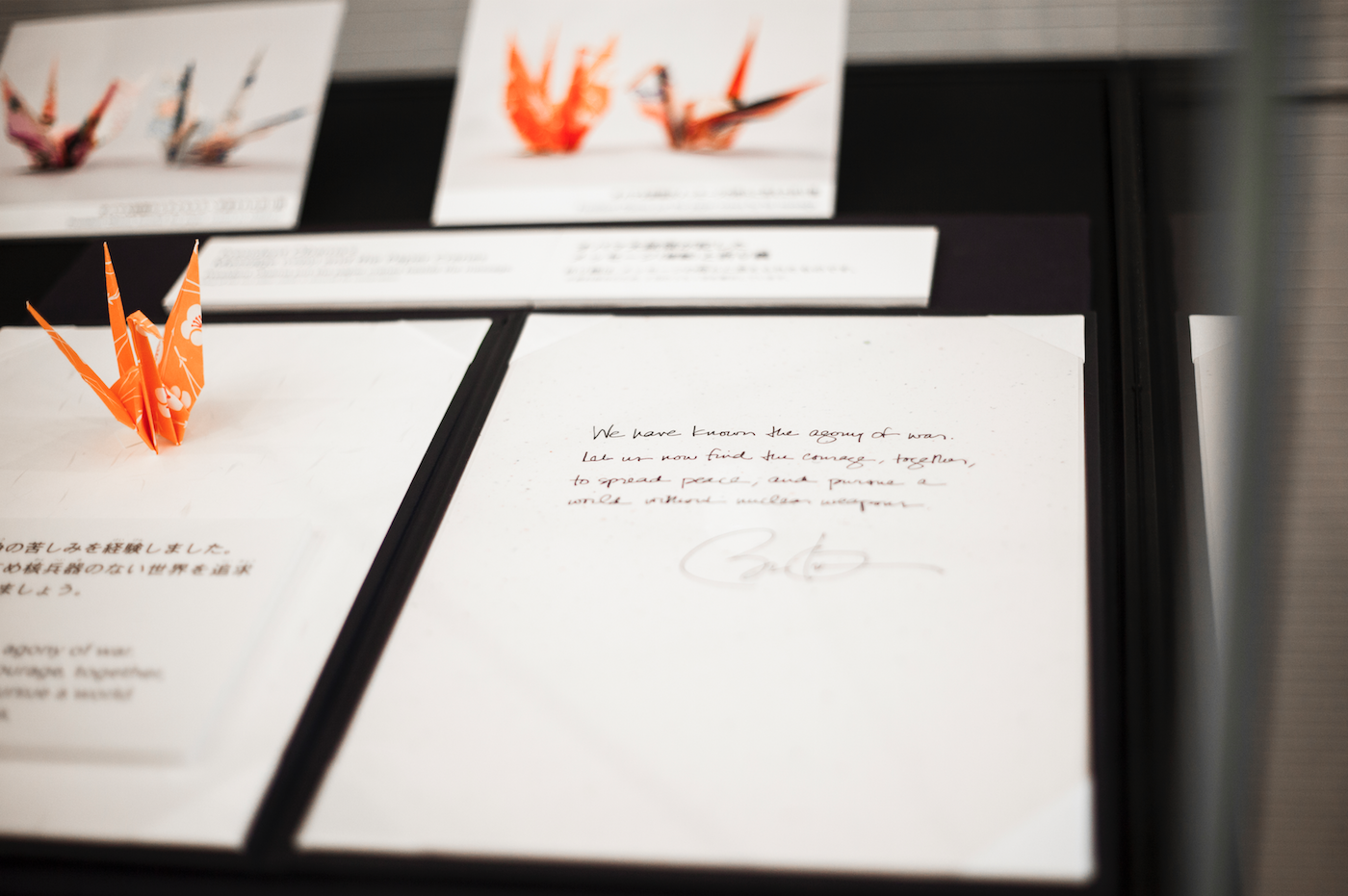
Former President Obama’s letter and one of the cranes he presented during his visit to the Hiroshima Peace Memorial Museum.
One of the most interesting displays in the exhibits we were able to see was a glass case containing former President Barack Obama’s handwritten note and cranes. In his letter, Obama recognizes the tragedy of incidents such as the atomic bombing of Hiroshima and presents his hope for a world without nuclear weapons. During his visit to Hiroshima, Obama also presented two cranes he presumably folded himself. I was definitely thankful that our former president was able to address a calamity caused by the United States, recognize a need for peace, and advocate for the abolition of nuclear weapons.
Overall, this experience has been my favorite memory of the Maymester trip. While many of my classmates’ research projects do not deal with the bombing of Hiroshima, I believe it is so extremely important for us to take the time to learn more about the history of Japan and how much harm humanity has caused. I hope in the future people will continue to visit the Hiroshima Peace Memorial Museum, and I hope there will no longer be disasters as devastating as this one.
